News
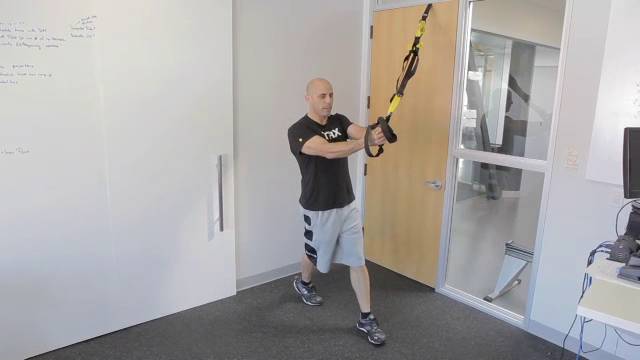
TRX as a Home Gym
Did you know that the TRX Suspension Trainer offers everything you need for a total home gym? Here, TRX Head of Human Performance Chris Frankel shows you unique TRX exercises for your arms, core, back and legs to prove that the TRX Suspension Trainer is in fact the best option when you are looking for a home gym.
Most workout programs call for pushing and pulling movements for the upper body, some sort of squatting or lunging for the lower body and some core work. Well, here are just a few ideas we came up with that you can do with your TRX home gym.
Push Movements
TRX Chest Press
TRX Chest Fly
TRX Triceps Press
TRX T-Press
Pull Movements
TRX Row
TRX Bicep Curl
Rotational Movements
TRX Resisted Torso Rotation
Or any of the above exercises in single handle mode
Lower Body Movements
TRX Squat
TRX Single Leg Squat
TRX Lunge
Put it all together for a metabolic challenge: TRX Burpee (Push-up, Plank, Lunge and Jump)
What’s important to note is that you can load (add weight) or unload (remove weight) any movement instantly just by changing your body’s position relative to the anchor point (stepping forward or back). This is a huge advantage to the TRX, you don’t have to changing weights after every exercise, so you don’t have to buy more plates or heavier dumbbells, essentially your set with one purchase.
Also you can modify any of the upper body movements to a single handle version adding a rotational or counter-rotational component, which you do not get with any other kind of workout system.
Takeaway: For a total at home gym a TRX Suspension Trainer is not only the more versatile and unique than any other product on the market but it’s also way more affordable and discreet than a set of weights or a bulky machine.
Get your TRX Suspension Trainer.
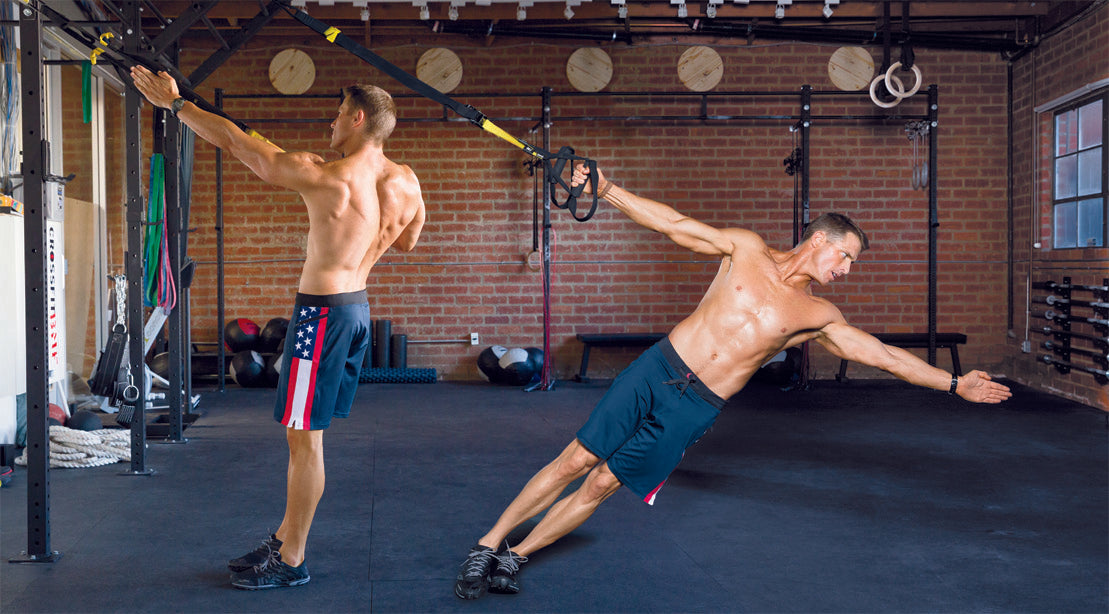
TRX Arm Workout
Arm strength is a prereq for almost every major sport out there, from baseball to MMA to football. Coach and human performance expert Nick Tumminello relies on what he calls his "big four" to give his professional athletes arms that would make Popeye himself sit up and take notice. The big four consists of the TRX Biceps Curl at two different angles (more on this below), TRX Triceps Extension and TRX Triceps Press. Ready to build stronger arms for your sport? Take our quick assessment quiz to get a customized arm workout plan tailored to your athletic goals.
TAKE OUR TRAINING QUIZ
We all know strong, toned arms are nice to look at, but there’s more to arm training than meets the eye. Performing isolation exercises like the ones in this video will also help you to improve sport specific performance and rehab injuries.
Improved PerformanceMany sports coaches don't think specific arm training protocols are very functional or have much carryover to sports performance, but Nick disagrees. “Ever try to run fast or jump high with a strained or torn biceps?” asks Nick. “You can't, because the biceps play a functional role in both of those activities.”
And simply put, specific biceps and triceps training is a must for ALL grappling and combat athletes. Everything from pulling a submission to attempting a take down to throwing a hook punch heavily involves the biceps and triceps and therefore demands those muscles to be strong.
Injury RehabYour biceps and triceps help to control your shoulder and elbow joints. Any physical therapist worth his paycheck would say that a successful rehab program starts by building motor control in a muscle. How? By isolating it. “Once you've taught your biceps or triceps how to work, they'll eventually ‘wake up’ and learn to work even better to support your joints and work even harder on major compound exercises and integrated activities,” says Nick.
It's All About AnglesIn the video, Nick gives us a quick lesson in biomechanics that will help you save time and get much more out of your TRX biceps and triceps training. During any style of biceps curl, the point at which your biceps is being maximally loaded (stimulated) is the point in the range of motion in which your forearm is at a 90 degree angle with the “load vector.” If you're using free weights, gravity is your load vector. So the point of maximal loading would be when your elbow reaches 90 degrees of flexion or when your forearm is parallel to the floor. If you're doing biceps curls using a TRX, the TRX strap is the load vector. Here, the point of maximal loading to your biceps is when your forearm makes a 90 degree angle with the TRX strap.
Different exercises will create a maximal force angle at different points in the range of motion, as Nick illustrates in the video. The nice thing about arm training using the TRX is that you can quickly and easily change up the load vector to create a different training stimulus. And new training stimulus means new muscle!
When performing this arm workout, keep the following guidelines in mind:
Perform all four arm exercises back-to-back in the order shown.
Perform two to four sets for eight to 12 reps of each exercise.
Rest 30 to 60 seconds between sets.
Perform both biceps exercises back-to-back without rest for a biceps super set.
Perform both triceps exercises back-to-back without rest for a triceps super set.
Perform a biceps exercise followed by a triceps exercise for a front-to-back arm super set.
If you don't have a suspension trainer, pick one up today.
TRX® PRO4 SYSTEM
BUY NOW
TRX® HOME2 SYSTEM
BUY NOW
TRX® TACTICAL GYM
BUY NOW
Nick Tumminello is founder of Performance University (www.performanceu.net), where he delivers world-class health and performance training and education to everyone from exercise enthusiasts to professional athletes. Nick is a highly sought after coach and educator and the inventor of the Core Bar. He has produced numerous educational DVDs and is a regular contributor to popular websites like T-Nation and Strengthcoach.com.

TRX and Sandbags
Who doesn't want more power? (We're talking physically here; we can't help you get ahead in your career.) Our recent post on TRX for Power (with kettlebells) was a hit with the TRX Community, proving you're a power-hungry bunch looking for new and innovative ways to build strength on the TRX. Take our quick power assessment quiz to get customized exercises based on your goals and equipment. Well, there's another tool out there to help you achieve that goal, and that tool is a sandbag.
TAKE OUR TRAINING QUIZ
Sandbag lifting shares a lot in common with kettlebells with regard to their ability to challenge not only strength but endurance as well. A good bag will force the lifter to maneuver and adjust to the awkward weight. This definitely causes the body to use more muscles and expend greater energy as it is hard to get into one consistent groove.
Increasing grip strength is another great reason to use sandbags. There is no piece of equipment that frustrates people as much as sandbags. Why? When using sandbags, there is no convenient place to grab. You have to constantly search for an open spot and then use a crush grip, which is nice for those of you who are into grip strength.
Well, what happens when you combine a weighted sandbag with the TRX Suspension Trainer? Fraser Quelch showed us once, in this post from last year. More recently, Dan McDonogh had a go with combining these two training modalities when he joined forces with Josh Henkin from Ultimate Sandbag Training in the TRX booth at IDEA World 2010. What followed was an awesome jam session of “you go, I go” as the two educators took turns exploring and creating incredible multi-planar exercises using a sandbag and the TRX, taking some great TRX movements such as the TRX Diagonal Reach, TRX Golf Rotation, TRX Lunge and TRX Pike to the next level. Check out the video above to see how a simple sandbag and the TRX could redefine your training.
According to Henkin, the benefits of using sandbags with the TRX are threefold:
Using the TRX with the sandbag increases the lever arm, creating a perception of more weight without actually increasing the weight of the implement. Really hits stability with this!
This is a great way to teach rotational training as the TRX/sandbag combo acts not only as load, but as a feedback system.
Adding load is only one way to increase exercise intensity. Using this combo in this manner also focuses on exercise complexity and leverage, two commonly overlooked ways to increase intensity.
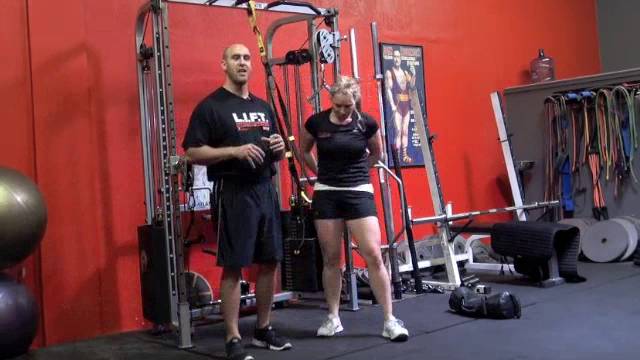
TRX and Sandbag Workout
One of the major mistakes people make in their fitness programs is allowing equipment to dictate the training. While we all enjoy the variety and versatility of various pieces of equipment, our training philosophy and systems should always determine which and why certain pieces of equipment are utilized.
In the case of TRX Training, we have a system of training that is built upon integration of the whole body during every exercise. The progressions of TRX Suspension Trainer drills often requires the stability of the whole body in all planes of motion. So, when we combine the TRX with other implements, we want to integrate tools and philosophies that offer similar not competing concepts. That is why programming the TRX with sandbag training can form a very comprehensive system of fitness.
In utilizing multiple training tools, we need to identify how they can fill in the “holes” of each other and how they can help teach concepts that are complimentary. In the above video, strength and conditioning coach Josh Henkin demonstrates how specific drills using both the TRX and a sandbag can help you reach your fitness goals.
Both the TRX and sandbags are based upon changing stability to enhance strength and perceived load. Manipulating leverage with TRX training may be familiar to many, but we can accomplish the same goal by changing the leverage of both body position and load position with the sandbag. Far too many times people add external load, and this philosophy of multi-planar whole body training gets lost. In order to allow incremental progression and more variables to allow successful progressions, we have far more options that we may first discover.
Options to increasing perceived load include the following:
Change of Speed: While many choose to try to increase speed, greatly decreasing speed may be an avenue of increasing intensity of the movement. As TRX Head of Human Performance Chris Frankel often states, “earn the progression.” This can be demonstrated by being able to display proper movement skills at much lower speeds to enhance control and isometric strength.
Range of Motion: While full range of motion is the desired end result of many movements, we can progressively implement varying ranges of motion to decrease or increase the perceived load.
Complexity: Often an overlooked component of traditional gym exercises, complexity can be a valuable tool for not only increasing the level of difficulty of the drill but the value as well. Exercise complexity can challenge movement in one plane while stabilizing in one or multiple planes of motion. An example lies in both TRX and sandbag training.
During the TRX Alternating Roll Out to Press, force is applied in the sagittal plane while being resisted in the frontal and transverse. In sandbag training, we can create the same training environment by altering the holding position and the stance of the body. Again, these are very complimentary training methods that allow more incremental progression and the ability to determine the right exercise for our clients without getting away from our core philosophy of stability, strength and mobility. See how not the random but deliberate combination of specific methods and equipment can yield higher results and reach new heights of your fitness.
Josh Henkin, CSCS is the creator of the Ultimate Sandbag™ and the Dynamic Variable Resistance Training™ program. His programs have been taught in over 10 countries and are highly sought after. Visit his website at www.DVRTFitness.com.
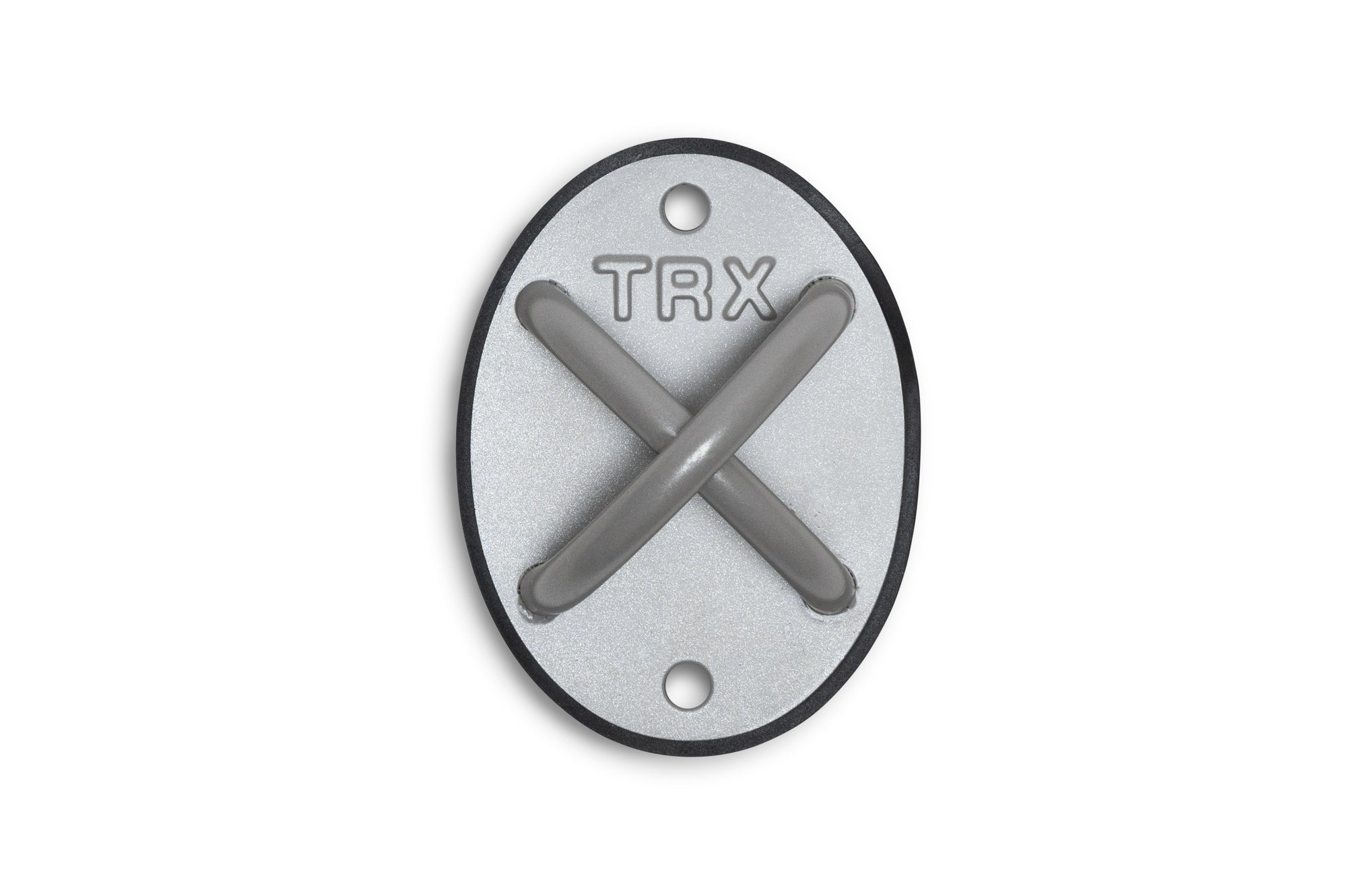
TRX
TRX® Anchors: 6 Ways to Set Up Your Suspension Trainer™
From permanent to semi-permanent to portable, there's a TRX anchor for everyone.

TRX Anchoring Mistake
While ideally your TRX Suspension Trainer should be wrapped around an overhead anchor point several times for a strong, secure hold, we often get calls from people saying this isn't possible in their gym or home, for whatever reason. For example, check out this anchoring "don't" that was recently submitted to us (left, below). This configuration will lead to unnecessary wear and tear on your TRX straps, which could ultimately result in breakage, of either you or your TRX. So our dedicated Customer Service team has come up with a solution. They recommend wrapping the Suspension Anchor strap around the point of attachment at least twice (middle and right, below). This gives redundancy in the clipped anchor point, providing the safest anchoring while ensuring the equalizer loop is still approximately six feet off the ground.
In instances like this, where the facility on the left has a higher than recommended anchor point, it's best if you invest in a TRX Xtender to give you the extra length that will allow you to wrap the Suspension Anchor strap several times around your point of attachment for a strong, secure hold. Not sure about your setup? Take our quick equipment assessment quiz for personalized recommendations on TRX accessories and installation guidance.
TAKE OUR TRAINING QUIZ
Have an anchoring dilemma? We're here to help! Give our Customer Service team a call today at 888-878-5348 or you can email them at customerservice@trxtraining.com.
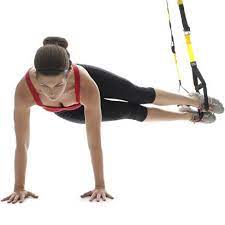
TRX
TRX Ab Challenge Workout
In this workout, TRX Master Trainer Jonathan Ross takes a three-dimensional, multiplanar approach to core training. Ross combines a blend of traditional and original TRX exercises that manipulate stability and movement to challenge your core. These exercises require you to remain braced and in control while manipulating your stability. While there may be a significant amount of movement in your extremities, engage your core to maintain control. The Challenge:
Perform these six exercises in succession, taking a 20-second rest between each movement. (Want to find the perfect exercise sequence and rest periods for your fitness level? Our quick assessment quiz can create a personalized workout timing strategy just for you!) This carefully structured format helps maintain an effective balance between intensity and recovery.
TAKE OUR TRAINING QUIZ
TRX Side Plank with Rotation (10 reps per side)
TRX Pendulum Mt. Climber (45 seconds)
TRX Elevated Pull Through (45 seconds)
TRX Side Plank with Knee Tuck (20 reps per side)
TRX Pendulum Pike (10 reps per side)
TRX Assisted Roll-up (15 reps)
If you want more, rest for two minutes and give it another go.
You can also incorporate other movements into this. Find some for yourself in our TRX exercises YouTube video:
Use our TRX gear below to help you.
TRX® PRO4 SYSTEM
BUY NOW
TRX® RIP TRAINER
BUY NOW
TRX® SRENGTH BANDS
BUY NOW
You can also find other TRX ab exercises like the ones above on our TRX Training Club dashboard. Try it for free today:
Jonathan Ross (www.AionFitness.com) is a TRX Master Trainer and the 2010 IDEA Personal Trainer of the Year. His “800 pounds of parents” directly inspired his prolific fitness career. He lost his father to obesity at over 400 pounds, then helped his mother lose 170 pounds. He is host of the Discovery Health series, “Everyday Fitness” and the author of Abs Revealed, which offers a modern, intelligent approach to abdominal training.

TRX 5x5 Workout Sequence
TRX Education Manager Steve Katai is back with another awesome TRX fitness challenge. This is a great workout if you're short on time and want a strength focus blast (upper body) in under 10 minutes. Want to make sure this challenge matches your fitness level? Take our quick assessment quiz to get personalized modifications and progressions that will help you get the most out of this workout. BONUS: By keeping the TRX Suspension Trainer in single handle mode at mid length, you can roll from exercise to exercise without rest to get a nice cardio benefit. Perform five reps of each of the following five exercises (alternating between right and left sides). Rest as needed. Repeat as desired.
TAKE OUR TRAINING QUIZ
1. TRX Single Arm PressStand facing away, find your challenging angle, wide base, right arm eccentrically bends as left touches the ground, pause and press returning to starting position.
2. TRX Pull/PressStand facing away, find angle, right hand extended out with left hand resting/overlapping right, slowly twist down to face anchor, then drive body back to starting position by pulling, twisting, and then pressing out.
3. TRX Triceps Press/PullStand facing away, find angle, right hand on handle, left resting on top, lower by bending elbows, press up and finish with pull/chest squeeze to right side (dominate hand takes majority of load, then switch sides).
4. TRX Single Arm Speed Skater w/Biceps CurlStand facing sideways, find angle, right leg planted, left leg lifted, drop down into crossing single leg squat, drive back up and then perform single-arm bicep curl.
5. TRX Single Arm Deltoid RaiseStand facing, find your angle, wide base, right arm extending in water ski position, pull body up using right arm into half “Y” deltoid raise.
Steve Katai was introduced to the world of triathlon when he won the Degree "Everyman Ironman" contest in 2003. Five months later, he successfully finished the 2003 Ironman Florida race in less than 13 hours. Now a four-time Ironman triathlete and co-author of The Complete Idiot’s Guide to Triathlon Training, Steve continues to share his passion for training in his position as TRX Education Manager.
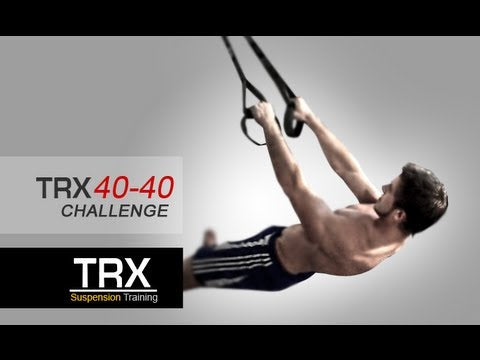
TRX 40/40 Challenge Revisited
The TRX 40/40 Challenge combines two signature TRX exercises we use to measure upper body and core strength: the TRX Atomic Push-up and the TRX Low Row. At our events, we have competitions to see who can get the most of each of these exercises. If someone can get more than 40 good reps, there's a good chance they are going to win! Also, we've been known to break out the 40/40 Challenge during our lunchtime workouts here at TRX HQ (see below).
Getting to the TRX 40/40 Level
Once you have accepted the TRX 40/40 Challenge and done your first max effort test to see where you stand. Want to find the perfect training progression for your current fitness level? Take our quick assessment quiz to get a personalized plan to increase your max reps.
TAKE OUR TRAINING QUIZ
It is time to work toward getting to that next level, whether it is 10/10 or 40/40. You can test your max effort about once every 10 to 14 days. Doing max efforts too often can lead to burn out. Here are a few proven ways to increase your max reps quickly.
“Grease the Groove”
Pavel Tsatsouline, the Kettlebell master, coined the phrase as it is used for exercise and training today. Greasing the Groove is achieved by “practicing” lower repetition sets, about half the number of reps capable of, with longer recovery periods. As you train for a specific exercise test, keep in mind that performing these moves requires “practice,” not just training. Training means working to fatigue and sometimes to failure. Practice means perfecting the skill of the movement, using strict form without going to fatigue. As you fatigue, your form breaks down. Stop your “practice” reps before you fatigue. One strategy is to drop in several “practice” sets over the course of the day as you walk by your TRX.
Descending Sets
Another “practice” strategy to use is descending sets with longer rest periods. Your first set should be between 50% and 70% of your 40/40 score; reduce reps by two or more on successive sets. If you are able to complete 20 TRX Atomic Push-ups and 20 TRX Low Rows, a descending set workout may look like this:
TRX AtomicPush-ups
TRX Low Rows
Set 1
12
10
Set 2
8
8
Set 3
5
3
Set 4
3
3
Set 5
2
3
Rest for one to two minutes between sets as needed.
There is not a magic rep number. The goal is to accumulate as many high quality reps as you can with strict form and avoiding fatigue with lower reps and enough rest. Use the “Grease the Groove” or “Descending Set” approach two to three times per week.Supplemental Exercises
One problem with only using TRX Atomic Push-ups and TRX Low Rows is you tend to train your strengths and overlook your weaknesses and compensations. Here are some supplemental exercises to enhance movement and strength for the TRX 40/40 Challenge.
Increase Your Core Strength
TRX Plank and TRX Side PlankYour ability to hold a solid, stable TRX Plank and TRX Side Plank is crucial for success in the 40/40 Challenge. Make sure your alignment is spot on; ears, shoulders, hips, knees and ankles should all be in a line. For training, try this approach: instead of holding your planks for 30, 45 or 60 seconds or more, perform reps of shorter duration. There is good research supporting the idea of holding a strong, tight plank for seven to 10 seconds at a time. Drop down for a two to three second rest and then back up to the plank. As your fitness improves, add more reps, not more seconds.TRX Body SawThe TRX Body Saw will strengthen your core and shoulders for better rowing and push-ups. You can try the same strategy you used for the TRX Plank. Perform 10 seconds of the TRX Body Saw, rest briefly and repeat another 10 seconds. As your fitness improves, add more reps.
Rock Your Rowing AbilityTRX Swimmer PullThis is a great exercise to strengthen lats specifically and the pulling movement in general. Using the TRX Swimmer Pull as part of a compound set with the TRX Low Row will get at those back muscles! Do a set of TRX Swimmer Pull followed by a set of TRX Low Rows.
TRX Y Deltoid Fly and TRX I Deltoid FlyUse the TRX Y and I Deltoid Flys to improve mobility and strengthen your upper back and shoulders. This will lead to a more powerful pulling movement. Alternate the TRX Y Deltoid Fly with the TRX I Deltoid Fly.
TRX Hip PressWhat? How can the TRX Hip Press help with rows? When you are performing TRX Low Rows, you rely on your hips to keep your body aligned and extended. Use the TRX Hip Press as an assistant exercise to strengthen your hips and core.
Make Your Push-ups More "Atomic"TRX Standing Roll Out and TRX Chest PressAlternate repetitions of TRX Standing Roll Outs with TRX Chest Presses and integrate core activation into your pressing patterns. As your strength and stability improves, progress to single leg versions of the TRX Standing Roll Out and TRX Chest Press and deeper angles.
TRX Atomic Push-ups (Single Leg)Just like it sounds, place one foot in both foot cradles and perform your TRX Atomic Push-ups. Pressing as you resist the rotational forces of having one leg suspended is a great challenge to your core.
Here is an example training routine using the exercise outlined above to supplement your training one or two days a week. Training here means working to fatigue and even to failure. Perform this workout on different days than your "practice" days. Be sure to modify exercise intensity and reps to your fitness level and goals. For variety, you can the order of exercises, starting from the bottom and working your way up every third workout.
Exercise
Reps
Sets
TRX Swimmer Pull
8-12
2-3
TRX Low Row
8-12
2-3
TRX Hip Press
8-12
2-3
TRX Y and I Deltoid Flys
8-12
2-3
TRX Standing Roll Out and TRX Chest Press
8-12 (alternate, 16-24 reps total)
1-2
TRX Atomic Push-up (Single Leg)
8-12 (each leg)
1-2
TRX Plank or TRX Side Plank
5-10 (hold 10 sec, rest 2-3 = 1 rep)
2-3
TRX Body Saw
5-10 (hold 10 sec, rest 2-3 = 1 rep)
2-3
Rest for 30 seconds between exercises.
